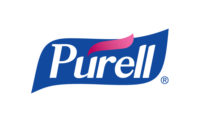Snack Food & Wholesale Bakery was recently able to talk to Maggie Allen, senior account executive, Loftware, about how to streamline compliance for food and beverage labels, as well as some best industry practices.
Liz Parker: What are some best practices for streamlining compliance for food and beverage labels?
Maggie Allen: Many companies today are rapidly phasing out inefficient legacy methods of labeling, like manually inputting data or managing labels in silos using varying software and processes across different facilities. When regulations are constantly changing, these types of processes can make compliance much more challenging due to a lack of consistency, more chances for human error and other factors.
To improve and modernize, more organizations operating both globally and domestically are adopting an enterprise-wide labeling approach, often referred to as Enterprise Labeling.
Enterprise Labeling involves standardizing labeling and integrating it with other business processes and across business lines. An enterprise approach is vital to enabling automation and maintaining centralized control over labeling, which is critically important for regulated food and beverage manufacturers who can’t afford delays in time to market, or worse, a recall.
With Enterprise Labeling, there are a few best practices and functions to consider for improving compliance and labeling overall:
- Integrate labeling with business applications: Labeling should be integrated with an organization’s other business applications, like its enterprise resource planning (ERP), manufacturing execution (MES), or product lifecycle management (PLM) systems. This can establish a single source of truth for consistent, reliable label data—which improves traceability and helps mitigate or prevent recalls caused by label errors.
- Enable easy collaboration and updates for all business users: Siloed updates may mean managing thousands of separate templates. Updates should be tracked and managed digitally, in one place, so verified changes can impact labels across the enterprise and teams can pinpoint where, when and by whom a label change was made. Additionally, Enterprise Labeling paves the way for business users to leverage user-friendly next-gen capabilities and automated updates to manage labeling processes. What’s more, modern label management systems don’t require costly and time-consuming IT intervention to design or update label templates.
- Future-proof labeling to grow with your business: Whether you’re expanding to new regions, opening new facilities or working with new suppliers, a label management solution should scale alongside a business and provide controlled access for partners. This way everyone can quickly access needed information in the right format, no matter where your business is headed.
LP: Have these best practices changed at all in 2021?
MA: Integrating Enterprise Labeling with broader business systems, centralizing control over labeling, empowering business users, and ensuring the ability to scale and adapt have never been more vital. To capture these capabilities and benefits, organizations are increasingly turning to cloud-based solutions—a trend that’s accelerating even faster because of COVID.
With a cloud-based labeling system, organizations can adjust and print labels remotely to ensure the continuous movement of supply. Cloud also enables organizations to quickly add new users in remote areas, connect new sites with an enterprise’s corporate standards, or extend compliant, controlled labeling to third parties like suppliers and co-packers.
Beyond the pandemic, new regulatory requirements—such as new nutrition facts guidelines and front-of-package label requirements—will place increased pressure on food and beverage manufacturers, distributors, and their supply chains. To keep up, Enterprise Labeling and cloud-based solutions will only become more critical.
LP: What are some particular best practices in the snack and baking industry?
MA: One critical challenge with the snack and baking industry is ensuring allergen labeling is both safe and compliant. In fact, undeclared or mislabeled allergens are one of the leading causes of label-based recalls for this sector, representing a serious hazard to the public and a potential financial catastrophe for any business.
Adding to this, the laws around allergen labeling are constantly changing. For instance, a recent new rule, Natasha’s Law, requires U.K. food companies to provide full ingredient lists and allergen labeling on all foods “pre-packed for direct sale.” And in the U.S., the Faster Act Labeling regulations recently recognized sesame as a major food allergen of concern, so it must now be clearly labeled. Failing to meet these regulations can come with non-compliance penalties and endanger customers.
To prevent recalls and ensure allergen labeling is compliant with the latest rules, snack food and bakery businesses need to migrate away from inefficient legacy processes, such as manually punching in data at different facilities. Instead, what’s needed to future-proof businesses and ensure consumer safety is a standardized approach to labeling and quality control.
With a digital or cloud-based label management solution in place, human error can be reduced greatly, and issues can be more easily prevented before a problem arises. For example, with a modern solution, standardized templates with the right data can be centrally stored and controlled, with access granted based on a user’s role. This type of system can unify operations enterprise wide, and provide more oversight of who can create, edit and utilize label designs.
Simply put, Enterprise Labeling makes it much easier to update barcodes, formats, languages, logos, warnings, and other critical components—leading to strengthened partnerships and supply chains and agility to meet whatever comes next.





